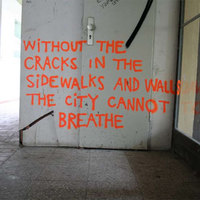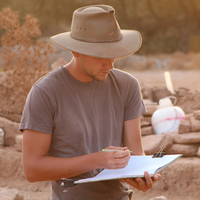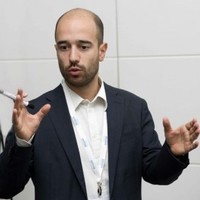
Michel HUBERT
Related Authors
Sofie Vermeulen
Université libre de Bruxelles
Quentin Letesson
UCLouvain (University of Louvain)
Aniss M. Mezoued
UCLouvain (University of Louvain)
Linus Vanhellemont
Vrije Universiteit Brussel
Genard Jean-Louis
Université libre de Bruxelles
Mathieu Berger
UCLouvain (University of Louvain)
Nicola da Schio
Vrije Universiteit Brussel
catherine bouland
Université libre de Bruxelles
Christophe LOIR
Université libre de Bruxelles
Chloé Mercenier
Université libre de Bruxelles







Uploads
Papers by Michel HUBERT
Just by its scale, the pedestrian zone became a powerful but still latent lever to make the city centre the main driving force in a paradigm shift to a more socio-cultural, ecological and economically sustainable capital of Europe. If this large pedestrian zone in a densely used and inhabited city centre were developed as a broadly supported urban project, which means that the project would bewell-designed, strongly embedded in existing plans and appropriated by its residents, then this project can provide all the conditions for being a driver to change the city centre of Brussels into the city centre of the metropolitan region. Necessarily, such a choice requires a to choose for an urban imaginary - a certain vision of the “ideal city” – that drastically abandons the ideal of the car city [Genard et al., 2016; Vanhellemont, 2016].
The ways in which the the urban imagery of a liveable, cosmopolitan and sustainable city can be realised, is one of the points of reflection at the heart of the BSI-BCO. Rather than asking how the pedestrian zone can contribute to the Brussels metropolitan area, we think that it is more interesting to question the way a metropolitan city like Brussels can anchor itself and make itself understood and shown in the Pedestrian Zone and the city centre of Brussels, by programming different types of public spaces, activities, events, businesses and identities along the values it wants to show. In this way, the question becomes: Can Brussels, as a cosmopolitan city at the heart of Europe, fulfil a pioneering role in this paradigm shift ?
Intervenue à la mi-2015, la piétonnisation des boulevards centraux bruxellois, de la Place Fontainas à la Place De Brouckère, est le fruit d’une décision politique majeure qui modifie la physionomie et la dynamique du centre-ville de Bruxelles. Le BSI-Brussels Centre Observatory (BSI-BCO), créé en avril 2016 avec l’aide des autorités publiques, a pour mission d’accompagner ce processus de transformation qui, vu son importance et son ampleur, s’inscrit nécessairement dans le temps long. Il livre ici un premier ensemble de contributions dont cet éditorial cerne les contours et les prolongements possibles.
Just by its scale, the pedestrian zone became a powerful but still latent lever to make the city centre the main driving force in a paradigm shift to a more socio-cultural, ecological and economically sustainable capital of Europe. If this large pedestrian zone in a densely used and inhabited city centre were developed as a broadly supported urban project, which means that the project would bewell-designed, strongly embedded in existing plans and appropriated by its residents, then this project can provide all the conditions for being a driver to change the city centre of Brussels into the city centre of the metropolitan region. Necessarily, such a choice requires a to choose for an urban imaginary - a certain vision of the “ideal city” – that drastically abandons the ideal of the car city [Genard et al., 2016; Vanhellemont, 2016].
The ways in which the the urban imagery of a liveable, cosmopolitan and sustainable city can be realised, is one of the points of reflection at the heart of the BSI-BCO. Rather than asking how the pedestrian zone can contribute to the Brussels metropolitan area, we think that it is more interesting to question the way a metropolitan city like Brussels can anchor itself and make itself understood and shown in the Pedestrian Zone and the city centre of Brussels, by programming different types of public spaces, activities, events, businesses and identities along the values it wants to show. In this way, the question becomes: Can Brussels, as a cosmopolitan city at the heart of Europe, fulfil a pioneering role in this paradigm shift ?
Intervenue à la mi-2015, la piétonnisation des boulevards centraux bruxellois, de la Place Fontainas à la Place De Brouckère, est le fruit d’une décision politique majeure qui modifie la physionomie et la dynamique du centre-ville de Bruxelles. Le BSI-Brussels Centre Observatory (BSI-BCO), créé en avril 2016 avec l’aide des autorités publiques, a pour mission d’accompagner ce processus de transformation qui, vu son importance et son ampleur, s’inscrit nécessairement dans le temps long. Il livre ici un premier ensemble de contributions dont cet éditorial cerne les contours et les prolongements possibles.
This feeds into concrete suggestions to improve public space, economic dynamics and mobility solutions.
The BSI-BCO proposes to strengthen the pedestrian network between uptown and downtown, and between the two railway stations, Brussels North and Brussels South. 4 axes come to the fore.
Sinds midden 2015 is een deel van de Brusselse Centrale Lanen autovrij, van het Fontainasplein tot aan het De Brouckèreplein. Deze voetgangerszone is het resultaat van een belangrijke politieke beslissing waardoor de aanblik en dynamiek van het Brusselse stadscentrum verandert. Het BSI-Brussels Centre Observatory (BSI-BCO), opgericht in april 2016 met de steun van de publieke overheid, wil dit transformatieproces op lange termijn opvolgen, omwille het belang en de omvang van dit stadsproject. In dit Portfolio#1 stelt het BSI-BCO haar eerste bijdrage voor. Deze edito kadert het werk en belicht mogelijke pistes voor de toekomst.